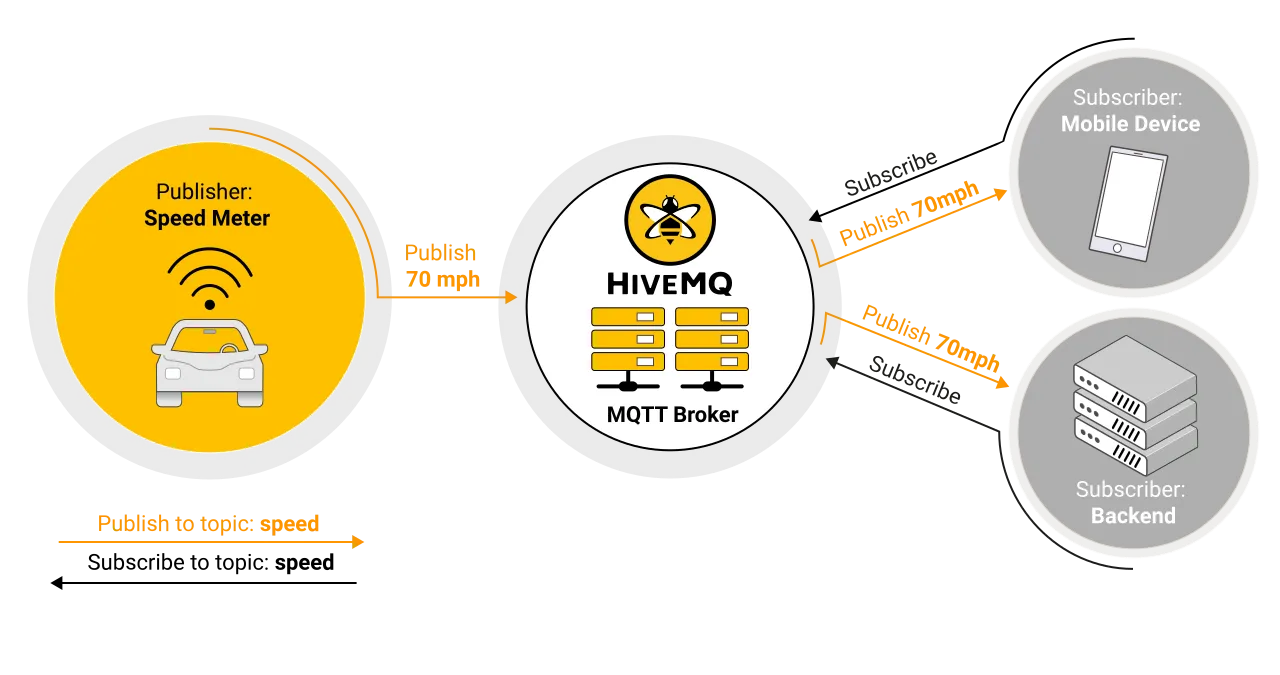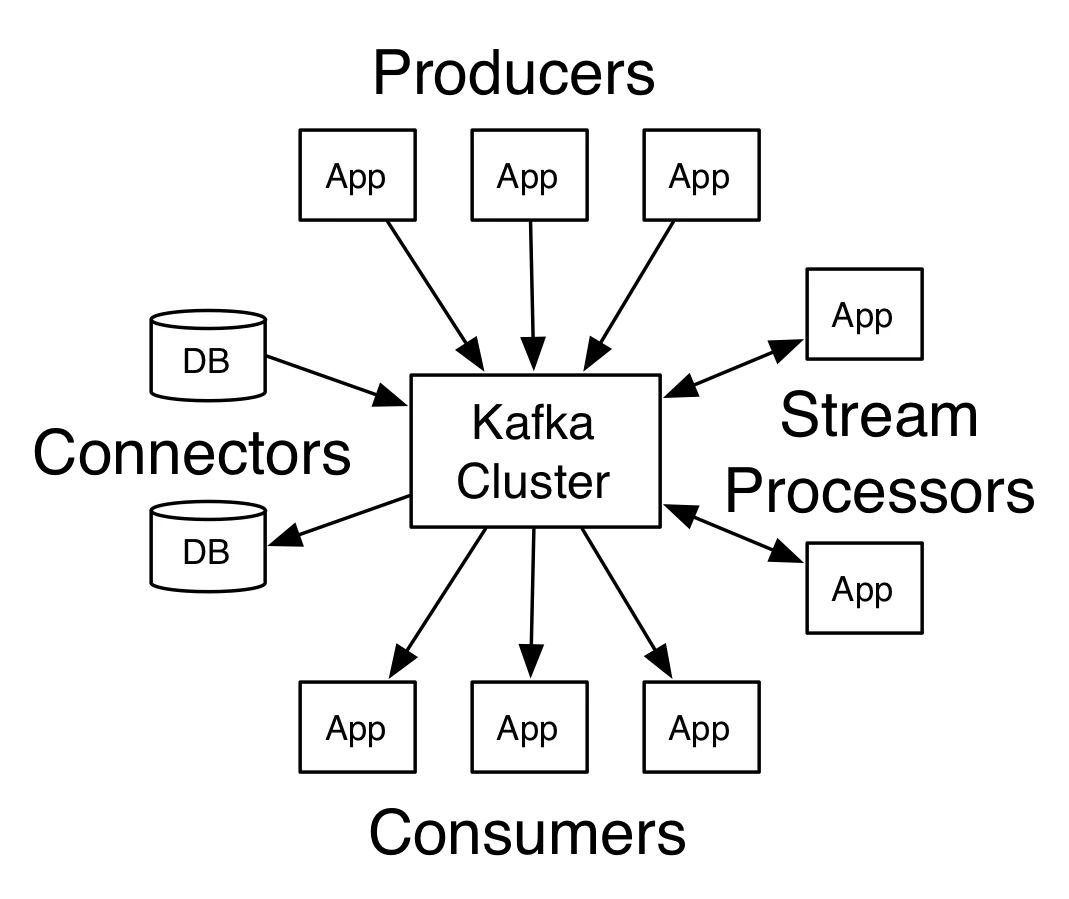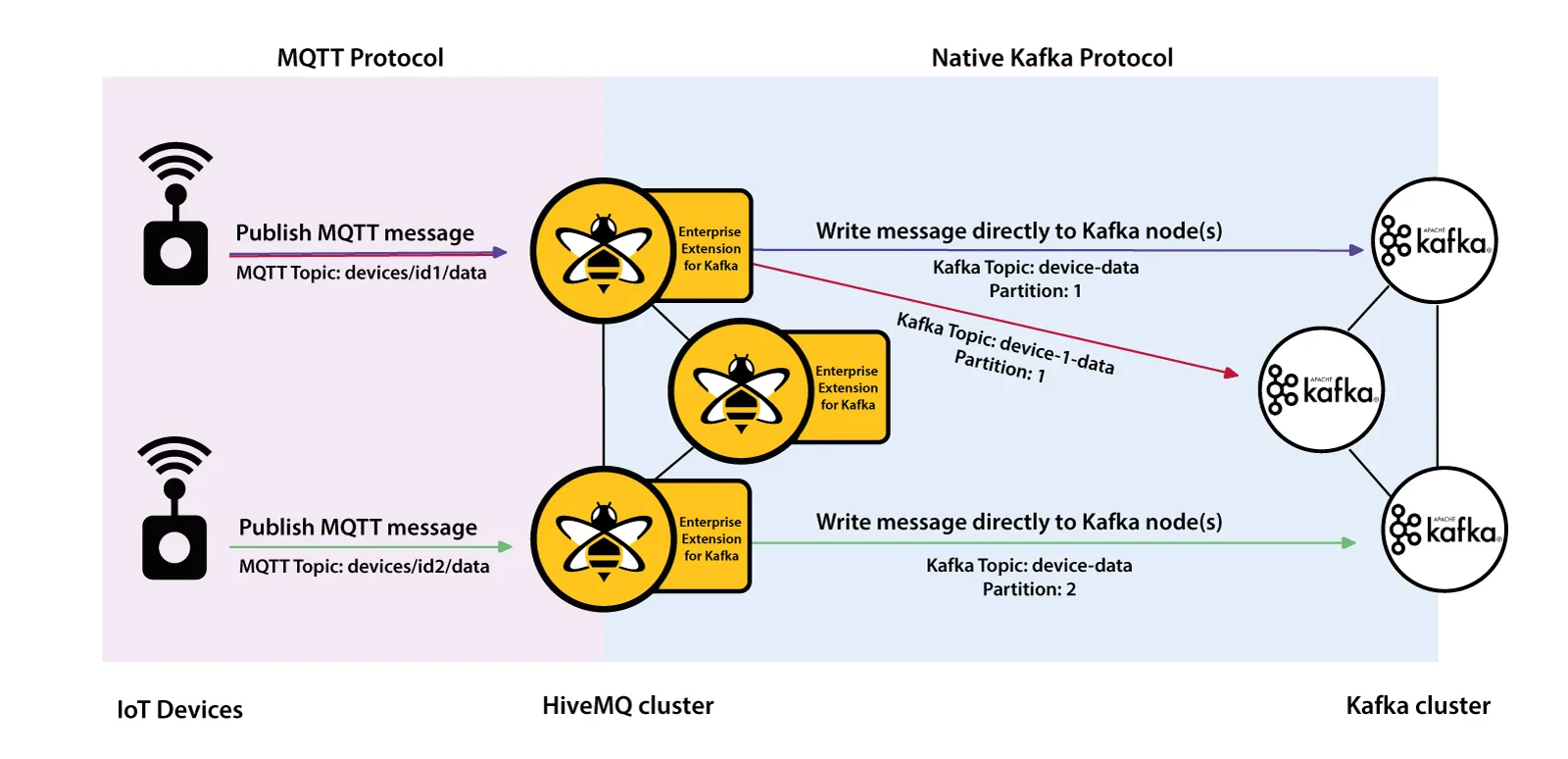MQTT vs. Kafka: Friends, Not Foes, in the World of Real-Time IoT Data Processing
The Internet of Things (IoT) has exploded in recent years, with billions of devices now connected worldwide. As this network continues to grow, the need for efficient, real-time data processing has become critical. Two popular technologies have risen to meet this demand - Message Queue Telemetry Transport (MQTT) and Apache Kafka. It is a common misconception that MQTT and Kafka are competitors. This article will debunk that myth and explore use cases where these protocols work together to provide real-time data processing. We will also discuss how HiveMQ Cloud offers a seamless path to get started with these powerful technologies.
MQTT Vs. Kafka: Understanding the Difference and Overlaps Between Both the Protocols
Before diving into the use cases, it is essential to understand the basics of MQTT and Kafka. These are two protocols commonly used for IoT data processing, but there is a misconception that they are competitors. In reality, they are complementary protocols that can be used together to enable real-time data processing. MQTT is a lightweight messaging protocol designed for low-bandwidth networks and IoT devices, while Kafka is a distributed streaming platform that focuses on high-throughput, fault-tolerant, and scalable data streaming.
Despite their distinct functionality and architecture, some people mistakenly view them as competing protocols due to their similarities in data transmission and processing. Let’s break down the differences and similarities between MQTT and Kafka, and examine how they can be used together to achieve optimal IoT data processing.
MQTT is a standard protocol that functions as another producer and/or consumer of data within a network, ensuring reliable data integration. As stated above, the protocol design focuses on providing a lightweight messaging system that uses topics to transmit information between nodes.
 How MQTT Protocol works
How MQTT Protocol works
In contrast, Kafka concentrates on the storage and reading of data, ensuring that information is available for processing in real time by third-party enterprise applications. Its distributed streaming platform is designed to handle vast amounts of data across multiple systems, providing high-throughput, fault-tolerant, and scalable data streaming. The architecture enables Kafka to store data in a centralized location, which can be read and processed simultaneously by multiple applications.
 How Kafka works. Image Source: https://kafka.apache.org/20/documentation.html
How Kafka works. Image Source: https://kafka.apache.org/20/documentation.html
One significant difference between the two protocols is their approach to data integration. MQTT uses a message-based system where data is transmitted through topics. Kafka, on the other hand, relies on a topic-based system, where topics store the data in a centralized location, making it easily accessible for processing.
Overall, while both MQTT and Kafka are used for data transmission and processing, their functionality and architecture are distinct. MQTT is ideal for low-bandwidth networks and connecting a vast number of devices, while Kafka is perfect for large-scale applications requiring real-time storage of data and processing by third-party data applications.
Combining MQTT and Kafka can provide numerous benefits for IoT data processing. When used together, these two protocols can enable real-time data streaming and processing, allowing for more efficient and accurate data analysis.
MQTT is primarily responsible for transmitting data from IoT devices, while Kafka focuses on storing and reading data. Once data is published, Kafka can process, analyze, and store the data for future use. This process allows for real-time data processing pipelines that can handle large amounts of incoming data from IoT devices.
The bidirectional data flow between MQTT and Kafka is established through topic mappings with the help of, for example, schema registry in Confluent, which ensures message correctness and data consistency. The source topic is the MQTT topic from which the data is collected, and the destination topic is the Kafka topic that receives the messages sent by MQTT Broker. By mapping topics from MQTT Broker to the Kafka cluster, users can choose which data to forward from their IoT devices and process it in a system of their choice.
Let’s look at a practical example.
Let’s say a manufacturing plant uses a large number of machines and sensors to monitor the production line. Each machine and sensor sends data in real-time, such as temperature, pressure, and machine status, to an MQTT broker for aggregation and analysis.
To gain deeper insights into the data, the manufacturing plant decides to use Kafka to ingest and store the data. By using Kafka, they can process the data in real time and store it for future use, allowing for more efficient analysis and decision-making.
To integrate the MQTT and Kafka protocols, the manufacturing plant uses an MQTT-Kafka bridge. The MQTT-Kafka bridge subscribes to the MQTT topics where the data is being published and forwards the data to the Kafka cluster.
Additionally, to ensure message correctness and data consistency, the manufacturing plant uses the schema registry, such as Confluent’s Schema Registry, for Avro and JSON messages. This registry allows for schema evolution and multiple compatibility levels, providing flexibility in message transformation. The schema registry ensures that the messages exchanged between MQTT and Kafka conform to a specific schema and are consistent across different systems. This helps prevent data errors and inconsistencies that can occur due to changes in data format or structure. Using the schema registry allows for schema evolution, where the schema can be updated over time while maintaining compatibility with older versions of the schema.
The HiveMQ Enterprise Extension for Kafka supports the use of Confluent Schema Registry for message transformation and also offers role-based access control for the Kafka page of the HiveMQ Control Center to restrict access to certain data.
You can see in this example the significant benefits of using MQTT and Kafka together to support large-scale data integration. By using these protocols, businesses and organizations can seamlessly integrate data from different sources into a single stream, allowing for real-time analysis and decision-making. This can be particularly useful in industries like manufacturing, where the analysis of real-time data is critical for optimizing production processes. Watch this webinar recording on Modernizing the Manufacturing Industry with MQTT and Kafka to learn more.
Another benefit of combining MQTT and Kafka is their ability to support data analysis at the node level. MQTT transmits messages that contain information about specific topics, which can be easily analyzed and processed using Kafka. This can be particularly useful in applications where specific pieces of data need to be processed in real-time, such as in the healthcare industry, where real-time monitoring of patient vitals is essential.
There are several successful use cases that demonstrate the benefits of combining MQTT and Kafka. For example, in the energy industry, MQTT is used to collect data from solar panels, which is then transmitted to Kafka for real-time analysis and decision-making. In the retail industry, MQTT is used to collect data from in-store sensors, which is then transmitted to Kafka for analysis to optimize store layout and product placement.
Use Case Examples that can Use MQTT and Apache Kafka
The use of IoT devices has become increasingly popular in a variety of industries, from smart cities to healthcare and industrial settings. Many organizations are turning to a combination of MQTT and Kafka protocols to effectively process the large amounts of data generated by these devices in real-time. Let’s explore five use cases demonstrating the power of using MQTT and Kafka for efficient data collection, processing, and analysis. These use cases include, but not limited to:
1. Smart City Management
Combining MQTT and Kafka enables efficient data collection and processing from many IoT devices used in smart cities. Traffic sensors, air quality monitors, and public transportation systems can all be connected using MQTT, while Kafka processes and analyzes the data in real-time. This can improve traffic flow, optimize energy consumption, and better urban planning.
2. Industrial IoT
In an industrial setting, sensors and machines generate massive amounts of data that require real-time analysis. MQTT can be used to connect these devices and transmit data to a central processing hub. Kafka can then process and analyze this data, enabling predictive maintenance, anomaly detection, and overall process optimization.
3. Healthcare Monitoring
Remote patient monitoring through IoT devices can lead to more personalized healthcare and improved patient outcomes. MQTT can connect devices like heart rate monitors, glucose meters, and wearables to transmit data to a central server. Kafka can then process and analyze this data, allowing healthcare providers to monitor patients in real time and make informed decisions about their care.
4. Supply Chain Optimization
IoT devices can be used throughout the supply chain to track goods, monitor storage conditions, and ensure timely deliveries. MQTT can connect these devices to transmit data to a central system, while Kafka can process and analyze the data in real time. This can lead to optimized inventory management, reduced waste, and improved supply chain efficiency.
5. Smart Home Automation
Smart home devices like thermostats, lighting systems, and security systems generate significant data. MQTT can be used to connect these devices, while Kafka processes and analyzes the data in real time. This can enable energy savings, increased security, and a more comfortable living environment.
Integrating MQTT and Apache Kafka: Getting Started
Several options exist for integrating MQTT and Kafka. One of the popular approaches is using Kafka Connect, which is a framework for connecting Kafka with external systems. MQTT source and sink connectors are available for Kafka Connect, allowing seamless data ingestion and transmission between the two technologies.
Another option we discussed in our manufacturing example is using HiveMQ Enterprise Extension for Kafka – an MQTT-Kafka bridge that allows bi-directional data flow between the two protocols.
 MQTT and Kafka integration via HiveMQ Cluster
MQTT and Kafka integration via HiveMQ Cluster
The MQTT-Kafka bridge is a translator between the two protocols, converting messages from MQTT to Kafka and vice versa. This can be useful in scenarios where data needs to be processed in real-time, such as in IoT environments.
You’ll need to configure a few components to set up the MQTT-Kafka bridge. First, you’ll need an MQTT broker, the hub for all MQTT messages. You’ll also need a Kafka broker responsible for receiving and processing Kafka messages. In addition, you’ll need to install the MQTT-Kafka bridge, which can be downloaded from various sources such as GitHub.
Once you have all the necessary components, you’ll need to configure the MQTT-Kafka bridge. This involves specifying the MQTT broker’s address, the Kafka broker’s address, and the topics to subscribe to and publish messages to. You’ll also need to also specify the format of the messages, which can be JSON or Avro.
After configuring the bridge, you can start publishing and subscribing to messages between MQTT and Kafka. Messages published to the MQTT broker will be automatically translated to Kafka messages and sent to the Kafka broker. Similarly, messages published to the Kafka broker will be translated to MQTT messages and sent to the MQTT broker.
The HiveMQ Enterprise Extension for Kafka can utilize Confluent Schema Registry for message transformation for both Avro and JSON messages.
Watch this webinar recording to understand the technical challenges of connecting IoT devices to Kafka and how the HiveMQ Kafka solution solves these problems.
Alternatively, you can also configure HiveMQ Cloud with the Kafka cluster. This configuration establishes a secure connection between the cloud managed MQTT broker and the Apache Kafka cluster, allowing for bidirectional message exchange without ongoing operational burden.
Monitoring and Troubleshooting MQTT and Kafka Integration
It’s important to proactively monitor MQTT and Kafka integration to ensure smooth operation and quickly diagnose any issues that may arise. Additionally, having a clear understanding of the flow of messages between the two systems and maintaining good documentation can help with troubleshooting and resolving issues.
To monitor and troubleshoot your MQTT and Kafka integration, there are a few tools and techniques you can:
Use monitoring tools like Prometheus or Grafana to monitor Kafka and MQTT metrics such as message throughput, latency, and error rates.
Use logging and tracing tools like ELK stack or Jaeger to diagnose issues in the integration and understand the flow of messages between the two systems.
Use load testing tools like JMeter or Gatling to simulate high traffic scenarios and test the performance and scalability of the integration.
Best Practices for Integrating MQTT and Kafka
To optimize message delivery and minimize latency when using MQTT and Kafka, there are a few best practices to follow:
Use QoS (Quality of Service) level 1 or 2 in MQTT to ensure message delivery and avoid loss of data.
Use Kafka’s built-in partitioning and replication mechanisms to ensure that messages are delivered in a scalable and fault-tolerant manner.
Tune the Kafka broker settings, such as buffer sizes and timeouts, to ensure optimal performance.
Ensure that the MQTT broker and Kafka brokers are located in close proximity to each other. This can help reduce network latency and improve overall performance.
Configure the MQTT client and Kafka producer to use the same message serialization format. This will help reduce message conversion overhead.
One of the best options that adhere to the above best practices is using a custom MQTT broker that can directly integrate with Kafka. This approach may require more development effort but offers flexibility and customization to suit specific application requirements.
If you are using the on-premise version of HiveMQ, you can still use the Kafka Extension by following these steps:
Install the HiveMQ Kafka Extension plugin on your local instance of HiveMQ.
Configure the plugin by setting the appropriate properties in the hive-kafka.properties file.
Once the plugin is configured, you can start consuming MQTT messages and publishing them to Kafka topics using the HiveMQ APIs.
Similarly, you can consume messages from Kafka topics and publish them to MQTT clients.
If you prefer to use the HiveMQ Cloud platform, integrating with Kafka is even easier. You can simply enable the Kafka Extension in the HiveMQ Cloud console, and configure the Kafka properties. Once configured, your IoT devices and applications can send MQTT messages to HiveMQ Cloud, which will then be automatically forwarded to Kafka topics. Similarly, messages from Kafka topics can be consumed and forwarded to MQTT clients through HiveMQ Cloud.
Conclusion
By integrating HiveMQ Cloud or the HiveMQ Kafka Extension with your on-premise version of HiveMQ, you can easily achieve bidirectional data movement between MQTT and Kafka, enabling real-time processing of IoT data. With HiveMQ Cloud, you can focus on building your real-time data processing pipeline while offloading the operational complexity of managing your MQTT infrastructure.
HiveMQ Team
The HiveMQ team loves writing about MQTT, Sparkplug, Industrial IoT, protocols, how to deploy our platform, and more. We focus on industries ranging from energy, to transportation and logistics, to automotive manufacturing. Our experts are here to help, contact us with any questions.
